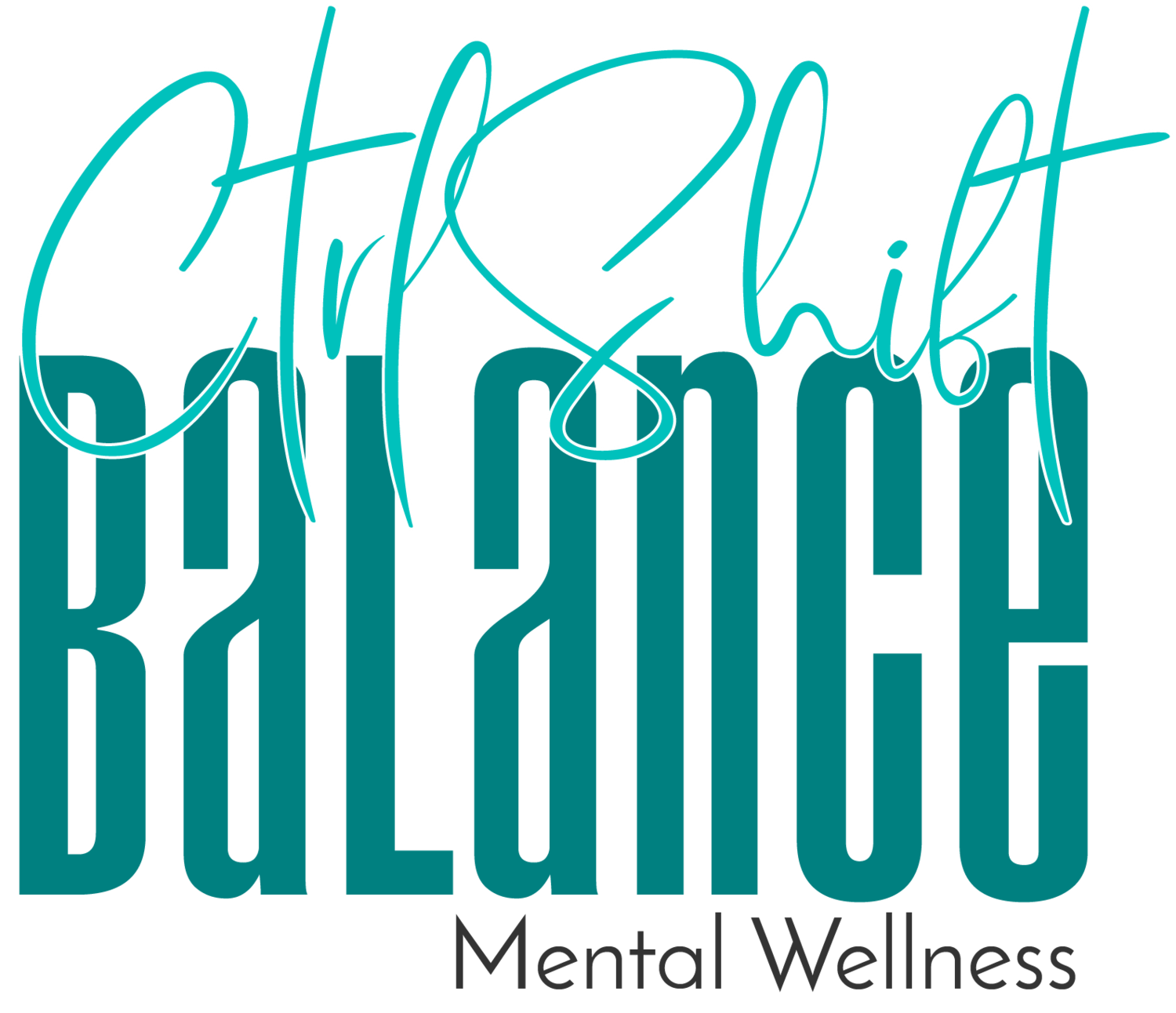
Ctrl Shift manage ANXIETY
When it comes to anxiety, many studies show that women are more likely to suffer it than men. The obvious reasons for this are brain chemistry and hormonal fluctuations. Also, men and women deal with anxiety differently.
If we’re being honest, there is no way to “fix” anxiety. It stays with you one way or another and all that you can do about it is learn how to Ctrl Shift & manage it.
Over time, many women have gotten to know anxiety better. They finally figured out what works for them when it comes to overcoming it. Knowing the tools available is a good first step when dealing with anxiety.
So, what should we do? Check out the list below on ways to manage anxiety with self-care.
GET ENOUGH SLEEP
Needless to say, sleep gives your mind and body to heal. Yet, most people don't get enough sleep. They often sacrifice a healthy seven to nine hours of sleep to keep up with the demands of the world. Start working towards getting appropriate sleep regularly. This will help maintain healthy emotional and social functioning.
RUNNING
Don’t you think that there’s something magical about getting up at 5 or 6 in the morning? And getting dressed half-asleep, going out, and having a run around the neighborhood? You get to observe the city and nature waking up, so quiet and so peaceful. You get rid of all tension, negativity, and stress before the day begins. You then become more relaxed, calm, and ready to face the day.
This is why many women found running as their way to cope with anxiety. This is also because research proves that regular exercise reduces the risk of chronic disease. It improves self-esteem and reduces the symptoms of both depression and anxiety.
POSITIVE AFFIRMATIONS
Having positive self-talk with yourself helps in altering your subconscious thoughts. When anxious thoughts begin to set in, affirmations help you adopt a positive mindset. Positive thoughts affect your reality. They can create an energy and perspective that shape your actions.
MEDITATION & BREATHING EXERCISES
Learn to clear your mind through meditation. Start by focusing on your breath and body sensations. Furthermore, evaluate your thoughts as they enter your mind. These techniques are proven to reduce anxiety.
Unfortunately, there is no quick fix to battling anxiety. It’s something that you’ll need to learn how to manage every day. But we can be grateful that there are many solutions to help reduce its presence in our lives.
If you feel like there’s more you want to add or you want to share your story, connect with me and let’s create an emotional wellness plan for you today.
If you would like additional resources to help you manage your Anxiety, check out resource guide or ebooks to kickstart your journey.
Your Partner in Balance & Wellness,
Shayla Peterson, LCSW, LISW-CP
Ctrl Shift Fire
When your anxiety shows up, picture it as fire and you have three choices:
Throw more logs in the fire (feed)
Watch the fire (passive)
Put out the fire (interrupt the cycle)
When we add more logs to the fire, you are thinking more anxious thoughts. Those logs can look like catastrophic thinking, all or nothing thinking or mental filtering. Often times leading yourself to a scenario that may not happen.
When you sit back and watch the fire, you may not throw logs in the fire, but you not making moves to prevent it from spreading. This can lead to feelings of panic out of nowhere.
Put the Fire out, this is the opportunity to provide you with relief from your anxiety. Take note that your relief may not be immediate or perfect. You can reduce the escalation with tools. This is the time to slow down, check in with yourself and slow down your thoughts:
1. Write your thoughts down. Schedule time to acknowledge them.
2. Write down your feelings about the thoughts. Spend time with them.
3. Re-frame your thoughts. Educate them.
4. Recognize the small wins of relief.
5. Repeat again.
Will you add more logs, watch it or put out the fire of anxiety?
Ctrl Shift Rest
When we find ourselves in storms of life, it often takes a while to regain our perspective. Remember that REST is an anchor for you. Think about when the week is filled with meetings, projections and running errands after work; rest allows us to spend time alone and reassess our priorities. On the other hand, if we are constantly on the go not giving our mind and body rest, that is counterproductive to our Mental Wellness. Possibly leading to feelings of overwhelm, keyed up, frustrated, sad mood, isolation or complete shutdown from everything. That fact of the matter is it’s unbalanced. Find time for REST, it’s productive and necessary for your mental wellness.
One way to achieve quality REST is through a balanced schedule., a mix of work and play, family and friend, reading several chapters to a book and binge watching TV, you get it. Remember the importance of having necessary clarity of the mind to discern which responsibility we should take on which one needs to wait.
How will you schedule time for REST this weekend?
With Balance & Wellness,
Shayla Peterson, LCSW, LISW-CP
Ctrl Shift Grounding
Grounding Techniques to Reduce Stress during COVID-19
Grounding yourself in times of Stress during COVID-19.
During this time of uncertainty, people are experiencing increased stress relating to fear of illness, quarantine routine, job layoffs, milestones events being cancelled or loss of your ideal imagine of how events will be happen. These factors may have a lasting effects on during the years to come on ones financial, physical, emotional and mental health. I wanted to share one of my most use skills that I share with clients that I work with to reduce their stress levels not just in times of uncertainty but throughout other stressors in life.
Grounding Techniques are things that you can do to help you feel solid, soothed and connected to yours surroundings. It involves you deliberating using your attention to an experience that you are having that is not threatening. Incorporating grounding strategies are good for people who have a hard time staying mindful. Using grounding strategies incorporates your whole brain oppose to using only one side which could lead us to missing key information.
Incorporating grounding strategies can help you feel calm when you feel your stress is overwhelming you and break your “fight, flight or freeze” response that you may experience. During COVID, you may have already experienced these responses. I will share some tips with you that you can incorporate immediately to work towards stress relief.
Imagine yourself as big tree. Stretch your arms up to the sky and imagine branches and leaves. Dig your feet into the floor and imagine them growing roots.
Take off your shoes and walk slowly around the room, feeling connection between your feet and the carpet with each step Feel your toes, your sole, and your heel connecting with the carpet.
Describe three things in the room in terms of sensory qualities (color, shape, texture, size, smell, etc.)
Shake your body. Begin my wiggling your toes, then your ankles, your lower legs and them move to your upper legs. Then do the same with your arms, hands and fingers.
Breathe in for a count of 4, hold for a count of 4, breathe out for a count of 4, and then pause for a count of 4. Try to slow your breathing down with each time that your practice.
Imagine being a peaceful place, close to nature. Visualize yourself at the beach or overlooking the bay or in the forest or hiking on a trail or in a park or garden.
THERAPIST FAVORITE : Drink a cup of tea slowly. First feel the warmth of the cup. Then smell the aroma. Notice the color and texture of the tea Take a small sip and swirl it around your mouth. Now swallow. Notice the taste and feeling of the tea as it flow down your throat.
Suck on a peppermint (a sunday classic) or smell eucalyptus.
Draw, paint or color.
Rub your pet, hold them in your lap, notice their breathing and feel their warmth.
Take a warm bath or showing, cuddle in blanket and slip on fuzzy socks.
Listen to soothing music
Go for a walk in the neighborhood.
Once you start to feel grounded and solid, you can look at the stressful situation and your emotions about COVID-19 without feeling so overwhelming and chaotic. Grounding signal to particular part of your brain (the amygdala to be exact) that you are safe in the present moment, allowing it put a pause on your “fight, flight or freeze” response.
I hope that you find these grounding strategies help as we continue to face this crisis. Email me at shayla@ctrlshiftbalance.com and let me know which one has been helpful for you. If you would to work through to addressing your “Fight, Flight or Freeze” during a pandemic, schedule a free 15 minute consultation.
Be Balanced & Grounded,
Shayla Peterson, LCSW







